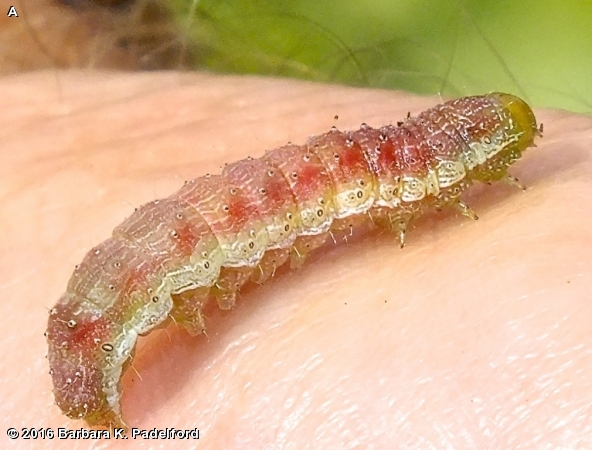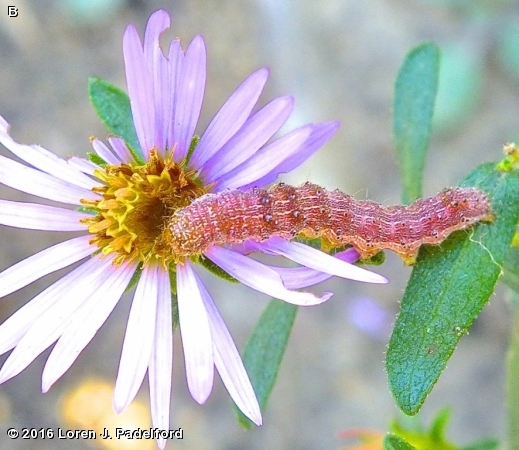
The color of the Tobacco Budworm caterpillar varies greatly, as they take on the color of the flowers they are eating. They are often green, but may be pink, red or yellow. There is a broad white subspiracular stripe with white spiracles outlined with black. Short, sparse hairs grow out of white or black pimple-like bumps. The head is pale green. The caterpillar grows to 1.4 inches. The adult moth has a wingspan of 1.25 inches. The forewing is pale olive green with 3 light tan parallel lines. There can also be a reddish line below the tan line. The PM line ends before it reaches the Costa and doesn’t continue to the apex with a black dash (as does the very similar Heliothis subflexus). The hindwing is cream-colored with a smudgy gray band, although some individuals may have rosy-colored veins and end band. The legs are pink.
The frequency of occurrence is not known, but it is probably more common in late summer and fall. The caterpillar was photographed in mid-September 2016 in the newly planted pollinator garden in the wetlands in Fontenelle Forest.
The larvae eat buds, flowers, fruit and seedpods and are able to match the color of the foodplant. Foodplants are tobacco, geraniums, petunias, roses, members of the nightshade family and others. The larva spends the winter in southern states as a pupa. It can’t survive the winter in northern states, so new moths disperse northward each spring.
Disclaimer: The content of NatureSearch is provided by dedicated volunteer Naturalists of Fontenelle Forest who strive to provide the most accurate information available. Contributors of the images retain their copyrights. The point of contact for this page is: Babs Padelford.

